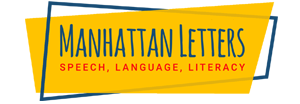What is a Speech-Language Therapist?
Speech language therapy refers to the evaluation, assessment, and treatment of communication and speech disorders in young children, teens, or adults. These speech disorders may have developed in infancy and continued into adulthood. In other cases, impairments may be a result of an injury or illness. To improve communication, a speech language therapist pathologist can provide articulation therapy, language intervention, and feeding therapy, to name a few.
What Are Speech Disorders?
A speech disorder generally refers to difficulties with speech production (articulation/enunciation).
Speech disorders include:
- Articulation disorders: These refers to difficulties producing the correct sounds, e.g. consonants, vowels, in the beginning, middle, or end of words.
- Phonological disorders: Systematic speech production error, e.g. child drops the /p/ sound at the beginning of words or substitutes sounds e.g. /w/ for /r/.
The following are examples of Communication Disorders that are not speech disorders:
- Fluency disorders: These are problems such as partial-word repetitions (“t-t-two”), stuttering, in which the flow of speech is interrupted by unusual stops, or prolonging syllables and sounds (s-s-s-s-shape).
- Voice resonance disorders: Problems with resonance involve difficulties with pitch, volume, or quality of the voice that hinders listeners from understanding what a person is saying.
What Are Language Disorders?
A language disorder refers to difficulties or problems in understanding what one hears or is being told as well as trouble with putting words together to communicate ideas compared to peers, e.g. word finding difficulties, trouble telling narratives, less robust grammar.
Language disorders are classified as:
- Expressive language disorder – Refers to difficulties with finding the words and using age-appropriate grammar to express themselves and speak with others.
- Mixed expressive-receptive disorder – This is a combination of an expressive and receptive language disorders characterized by difficulties in listening, understanding, and expressing language compared to peers, e.g. following directions, listening to stories, understanding sequential information.
- Cognitive communication disorders – Refers to communication skills that involve attention, memory, perception, regulation, organization, and problem-solving.
Read more about language and speech disorders.

Who Gives Speech Language Therapy?
A speech language therapist pathologist or speech language pathologist (SLP), often simply referred to as speech therapist, is someone who specializes in human communication, including its development and its disorders. They prevent, assess, diagnose, and treat speech, language, cognitive-communication, social communication, voice, and swallowing disorders.
SLPs have:
- A master’s degree
- State-licensure/certification in the field
- A certificate of clinical competency from American Speech-Language-Hearing Association (ASHA)
An ASHA-certified SLP must:
- Pass a national exam
- Complete an ASHA-accredited supervised clinical fellowship
Read more about the Qualifications for Speech Language Therapists Pathologists.
What Does a Speech Language Therapist Pathologist Do?
In speech language therapy, an SLP works with individuals of all ages—from babies to adults. They conduct therapy sessions on a one-on-one basis as well as provide information to families, support groups, and the public.
A speech language therapist pathologist is equipped and licensed to perform a variety of therapies or treatments to address a patient’s difficulties. These include:
- Language Intervention Practices: For younger patients, the SLP uses play, casual conversation, illustrations (such as pictures, books, objects), or on-going events to stimulate language development. A speech language therapist pathologist will teach and model the proper use of grammar and vocabulary and use repetition exercises to build up language skills.
- Articulation Treatment: Articulation or sound production exercises involve having the therapist teach and model the correct sounds in syllables and words to a patient, often during play activities. The level of conditioning and exercises is individualized, age-appropriate, and targeted.
- Swallowing and Feeding Therapy: The SLP teaches how to use the lips, tongue, and jaw to handle food. The SLP can also introduce different food textures and temperatures to extend a child’s oral awareness during eating and swallowing.
Who Needs Speech Language Therapy?
An individual with the following conditions may consider speech language therapy:
- Learning difficulties
- Cleft lip or cleft palate
- Weak oral muscles
- Respiratory problems (breathing disorders)
- Cognitive (intellectual, thinking) or other developmental delays
- Autism
- Hearing impairments
- Chronic hoarseness
- Articulation problems
- Fluency disorders
- Traumatic brain injury
- Feeding and swallowing disorders
Therapy should begin as soon as possible. Children who start getting speech language therapy early on (before five years old) tend to have better progress or results than those who begin therapy later.
Examples of Language Therapy
- Receptive Language Delay Disorder
- Expressive Language Delay
- Early Childhood Expressive Language
- Developmental Language Disorder Therapy
Examples of other services offered by speech pathologists.
How Can Parents Help?
Parents and family members play a vital role in the success of a child’s speech or language therapy. When parents are involved, children can successfully complete therapy faster and enjoy lasting results.
With the SLP’s guidance, parents can further support their children by doing exercises and activities at home. Finally, it’s essential for parents and household members to understand that overcoming speech and language disorders will take time, effort, and patience.
Schedule a Free Consultation Today!
Phone: (347) -394-3485
Text: (917) 426-8880
Email: [email protected]
We are ready to help you right now!

